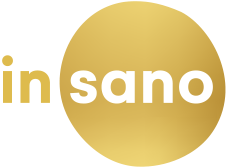Strong ideas, impactful stories
on important issues
Three sides of the coin
There are three sides to a coin – sometimes the narrow side is overlooked. Forward-reaching growth is built on an idea, a story and actions. There is no third without one.
What is an idea? The idea of an idea is to dismantle an existing model and replace it with a better, smarter, more useful one. The idea of the typewriter was brilliant, the idea of the laptop even more brilliant. A strong idea can be recognized by its disruptive nature. It is resisted at first and later the new idea becomes ordinary. Until the idea is replaced by a better one again.
Success stories are based on a sharply described idea, which has been able to be shared with a catchy story, which has been able to be turned into actions. Just before the right moment.
Onward
The success or failure of every company is driven by a story.
We are all familiar with failure stories: we stayed put, we were blinded at the top, we didn’t take on the right things at the right time.
Building the right story is not a secret science. It is a systematic and not very creative craft, based on solving precise question-answer pairs and formulating a sufficiently disruptive idea.
Onward starts with a realistic picture of the situation. Onward also draws on the valuable and insightful past. The right story describes a truth that reaches forward, the implementation of which is rewarding and profitable.
How to construct a story?
Sometimes it is necessary to build an idea and a story quickly. Sometimes it is wise to proceed thoroughly and smoothly. We help on both paths.
A strong idea and the right story can be built together with Insano in three and a half ways:
1. Quickly (often used in connection with a sales story or communication). Takes a little time, surprisingly cheap. A little time means about a week.
2. Deeply (often used in connection with a business idea, a limited communication problem or influencing). Takes a little more time, on average. A little more time means a few weeks.
3. Smoothly (used in connection with building a story about corporate culture, strategy or new business). Takes time, is valuable. Takes time means months.
3.5. Really quickly. Describe the problem, you get an idea and one narrative statement. Takes very little time, on average. Very little time means hours.
In story building, we use 3-7 working questions, to which we seek the most precise answers together with the client, in smaller or larger groups.
Business leaders and others who exercise influence responsibly should ask themselves a few good questions. What exactly is our goal? Why would someone want to believe in us? Do we want to grow a little or do we want to change the market?
What is a story?
“Are we starting to tell a fairy tale here?”
This is what the director of a large company asked. The question started a long collaboration that reshaped the rules of the game and the market in the industry quite successfully. Of course, there was also luck involved. And what about the story? A one-page paper that describes the journey, the goal, and provides the ingredients for the themes of communication and marketing. We are leaning forward with the changing principles that guide corporate culture.
“Not exactly fairy tales to tell. Let’s tell the truth.”
Fairy tales are stories, of course, and were originally told specifically to adults. When the goal was to create faith in better alternatives.
A story is not a list of characteristics, a self-satisfied list of company quirks.
The power of a real story is based on a simple definition: what is the truth that we as a company want to witness and whose truth we can influence ourselves to create.
The tension in a story is created by the balance of forces and counterforces.
“If you tell a new story in a new way, you are incomprehensible. If you tell an old story in an old way, you are boring. So tell a new story in an old way and an old story in a new way.”
What Insano is
Insano produces ideas and stories that create hope.
Insano Oy was founded in 2005.
’in sano’ means progress towards a new balance, stability, or the next desired state.
Insano’s founder and owner, Marko Kulmala, majored in literary studies. He has worked as a manager in media, operator business, and an advertising agency.
Marko Kulmala is an assistant and a bagman, CEO, and story builder.
Marko is an experienced and award-winning story builder. He enjoys weightlifting, literature, and forestry. Kulmala has published two books: Hyvä idea ei toimi (WSOY 2009) and Kasvu (Teos 2011).
Story tips
Stories (including those of companies) are intertwined with other stories, sometimes going back a long way. Storytelling skills are developed by studying stories: new, old and really old – by reading, watching, listening.
In our work, we do not burden the client by diving into the depths of all the reference stories, unless the client wants to be a little burdened.
Here is an updated list of tips:
To read:
Emily St. John Mandel: The Glass Hotel, a brilliant novel that also touches on decision-making in the business world. What happens just before a big mistake?
Haruki Murakami: The Death of the Commander, a masterpiece by the Japanese master.
Joel Haahtela: Adéle’s Question, Jacob’s Ladder, Hengittämisen taito. A brilliant short novel trilogy.
Maria Turtschaninoff: Suomaa. A wonderful long-term novel.
Benjamin Labatut: When We Cease to Understand the World. Scientists get excited and the moped gets out of hand. Not jokingly, really. A clever book that combines essayistics and novelistic storytelling.
Patrik Svensson: The Gospel of the Eels. You never know how incendiary an eel is. Until you’ve read this.
David Foster Wallace: A Supposedly Fun Thing I’ll Never Do Again. Usually Wallace is listed on lists so that the lister seems smart (and of course he is now too), but besides that, these essays are heartbreakingly delicious.
Valdur Mikita: Kukeseene kuulamise kunst. Mikita’s Valdur sometimes brags quite high-flownly, but opens up lively perspectives on the creation of the Baltic Finnish worldview.
Kirsi Piha: Levoton lukija. Kirsi Piha is an excellent writer – the reader feels as if they are being talked to. That’s the art of it.
Robert McKee: Story. The cornerstone of storyteller textbooks.
Paul Arden: Whatever you think, think the opposite. The cornerstone of idea generation textbooks.
Steven Pressfield: The War of Art. A guide to writing when writing doesn’t go very well.
Ville Hänninen: Käännekohta. The rise of cover art in the 1950s and 60s. Book covers are great art, marketing and communication. One picture and a few words. This book is a treasure trove.
Simon Sinek: The Infinite Game (2019), how is a company’s long-term life cycle created?
Tom Peters: Re-imagine, a turbocharged classic by a strategy guru. Reading this is almost impossible and rewarding.
Mikko Leskelä: Business Anthropology and Leskelä & Jaakko Luomaranta: Open Strategy, Closed Strategy. Strategy Overdose? Not at all. By reading these, you will learn and learn more.
Ray Dalio: Principles: Life and Work (2017), a successful investor’s thinking about principles in practice.
The Rule of St. Benedict, Benedict of Nursia’s rule from the 6th century is a dive into different principles, if you see the rules as principles.
Nunna Kristoduli: Päiväkirjat (2023), the diaries of the late nun Kristoduli describe a young girl’s story of growing up to adulthood and finding a slightly different kind of meaning. A great reflection on the dimensions of humanity from the perspective of the life span.
To watch:
My Octopus Teacher, Netflix, a fascinating documentary. What can a person learn from a blackfish?
Succession, HBO Max, are we humans like this, similar to Roy’s family?
Tove, Yle Areena, a brilliant brilliant story about hope and love written by Eeva Putro.

